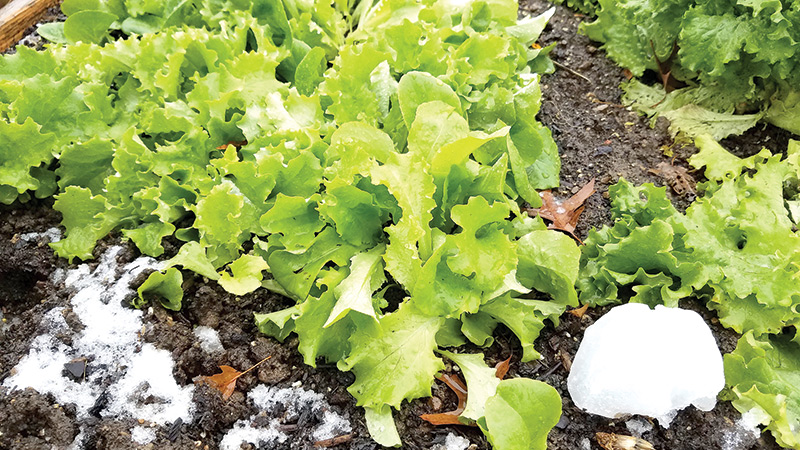Extending the growing season with cold-tolerant lettuce

By Bob Eister
OSU Ext. master gardener volunteer
CANFIELD
In the past year, I have wondered why some of my lettuce was able to survive the first of the fall frosts and continued to survive the winter weather. So this fall, I decided to try an experiment.
I ordered a few cultivars suitable for the season and used them to plant a few cold-tolerant lettuce trial plots so I could eat better (and more local). There are many varieties to choose from, depending on your choice of seed vendors. Butterhead, Romaine, and Loose-Leaf all some of the types you can choose.
What you plant and when you plant it makes a big difference. Lettuce plants grow fast and can generally be harvested in the 35- to 40-day range.
Some varieties will continue to grow if you just cut a few leaves off at a time. Small and medium-sized plants of Rouge d’Hiver, Winter Density, and Tango can survive temperatures down to 15 degrees F (-9.5 degrees C). I’ve seen some small unprotected lettuces like Tango survive down to 5 degrees F (-15 degrees C).
Other particularly cold-hardy lettuce varieties that do well include Outredgeous and Red Oak Leaf.
Just remember that the weather is a major factor on your fall garden. Sunlight may be scarce. It may be a wet fall, causing the plants to rot. So, raised beds and cold frames are beneficial to overcome some of the challenges.
In early September, I chose cold-hardy varieties like New Red Fire, Oscarde and Salad Bowl for planting in cold frames. I used some row covers and low tunnels to protect some of the trial plots of the other varieties listed above.
Many of the trial plots were left unprotected from the weather. If you try this, be sure to plant in a sunny and higher location. I used raised beds, because cold air will settle in lower areas. I did find that immature, actively growing lettuce plants are more cold-hardy than full-sized, mature plants.
Any method to insulate the plants to protect them from frost is a great benefit. Colder frosts with a quick warm up with cause a breakdown of the cells.
I continued to harvest until the coldest weather in December. Lettuce grows much slower, however, as temperatures consistently drop.
You may find as I have that the flavor and sweetness of your hardy vegetables are actually improved by the cold weather. I find it sweet when I remember I am saving time and money by going to the garden now rather than the grocery to get my carrots and lettuce for my dinner salad.
For information on extending the season in the vegetable garden and for frost protection of plants in the garden, visit: http://go.osu.edu/extendingtheseason.
 43
43
